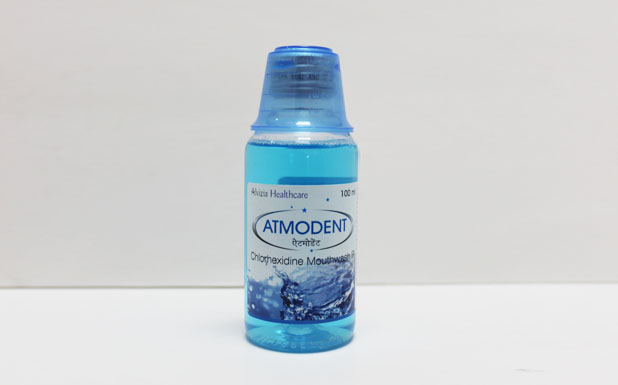
Composition
- Each Bottle Contains:
- Chlorhexidine Gluconate Solution
0.2% W/V
Packing
- 100 ML
MRP
- 60
Overview
Chlorhexidine is a broad-spectrum antimicrobial biguanide used as a topical antiseptic and in dental practice for the treatment of inflammatory dental conditions caused by microorganisms. Chlorhexidine, also known as chlorhexidine gluconate (CHG), is a disinfectant and antiseptic .[ It may be used both to disinfect the skin of the patient and the hands of the healthcare providers.It is also used for cleaning wounds, preventing dental plaque, treating yeast infections of the mouth, and to keep urinary catheters from blocking.It is used as a liquid or powder.
Indications
Chlorhexidine is used in disinfectants disinfection of the skin and hands, cosmetics (additive to creams, toothpaste, deodorants, and antiperspirants), and pharmaceutical products preservative in eye drops, active substance in wound dressings and antiseptic mouthwashes.
Mechanism of Action
Chlorhexidine’s broad-spectrum antimicrobial effects are due to its ability to disrupt microbial cell membranes. positively charged chlorhexidine molecule reacts with negatively charged phospholipids on microbial cell surfaces - this reaction both destroys the integrity of the cell, allowing leakage of intracellular material, and causes precipitation of cytoplasmic components, ultimately resulting in cell death.
Pharmacodynamics
Chlorhexidine is a broad-spectrum antimicrobial with demonstrated activity against both gram-positive and gram-negative bacteria, yeasts, and viruses.Antimicrobial activity is dose-dependent - chlorhexidine is bacteriostatic at lower concentrations (0.02%-0.06%) and bactericidal at higher concentrations .Pharmacokinetic studies of oral chlorhexidine rinses indicate that approximately 30% of the active ingredient is retained in the mouth following rinsing, which is subsequently slowly released into oral fluids. Dental chlorhexidine rinses may result in staining of oral surfaces, such as teeth. This effect is not ubiquitous and appears to be more significant with extended therapy (i.e. up to 6 months) - nevertheless, patients for whom oral staining is unacceptable should use chlorhexidine rinse with caution and for the shortest effective interval
Pharmacokinetics
Absorption: Topically, chlorhexidine is unlikely to undergo any degree of systemic absorption. Orally administered chlorhexidine, such as that found in oral rinses for dental purposes, is very poorly absorbed from the gastrointestinal tract - the Cmax in human subjects following an oral dose of 300mg was 0.206 µg/g and occurred approximately 30 minutes after ingestion (Tmax). Following the insertion of 4 PerioChips in 18 adult patients, no detectable plasma or urine chlorhexidine levels were observed
Metabolism: As chlorhexidine is very poorly absorbed in the gastrointestinal tract, it is unlikely to undergo metabolic conversion to any significant extent
Elimination: Excretion of chlorhexidine gluconate occurs almost exclusively via the feces, with less than 1% of an ingested dose excreted in the urine
Contraindications
- Breast-feeding. It is not known if chlorhexidine is excreted into breast milk.
- Dental work
- Infection, periodontal disease
- Surgery
- Ocular exposure
- Pregnancy
- Tympanic membrane perforation
- Lumbar puncture, occlusive dressing, skin disease
Side Effects
- Mouth irritation
- Tooth staining
- Dry mouth
- Unusual or unpleasant taste in your mouth
- Decreased taste sensation.
Storage
Store chlorhexidine gluconate at room temperature away from moisture and heat.